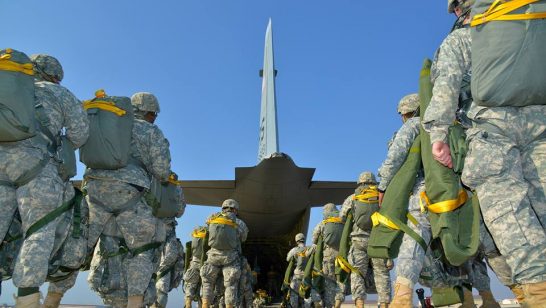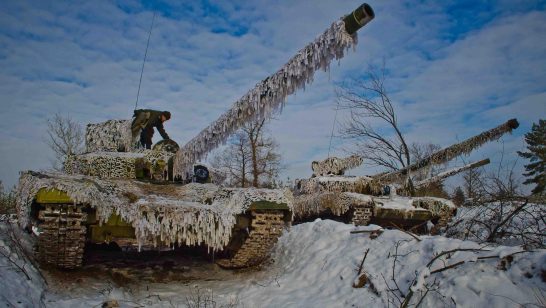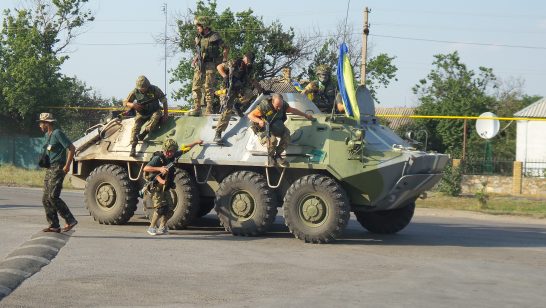
A follow-up article to this piece, entitled “It’s not Time to Arm Ukraine“, was published by the European Leadership Network on 20 December 2017.
The Trump administration’s recent signals about revisiting President Obama’s decision not to supply lethal weapons to Ukraine should be considered in the context of a renewed system of U.S.-Russia relations. This “reconfiguration” is being played in and around Ukraine, and it includes a combination of intimidation and threats, as well as barter proposals tabled by both parties. Providing Ukraine with lethal weapons is being used by Washington as a means to threaten Moscow, and should be seen against the current backdrop of antagonistic relations and broader challenges to European security. President Obama did not see a military solution to the Russia-Ukraine conflict and preferred to punish Russia with economic sanctions. Now, perspective of lethal weapons deliveries is being used by the new U.S. administration as a means to deter further Russian encroachment into Ukrainian territory.
Given the extensive military support that Russia provides its proxy forces in the Donbas, this is a corrective measure which would worsen the situation on the ground for the Kremlin. The more statements the US makes about delivering lethal weapons to Ukraine, backed by other decisive U.S. actions, the more likely Moscow will be willing to compromise and negotiate on sensitive topics.
Among the arguments made against providing lethal aid was that it might escalate the conflict and that U.S. weapons might fall into the wrong hands. Russia has repeatedly opposed the provision of lethal weapons to Kyiv arguing that it would only aggravate the situation in the Donbas and interfere with the implementation of the Minsk agreement. Beyond that, it questions the ability of Ukraine to maintain appropriate control over any additional externally provided lethal assets and to prevent them from falling into the wrong hands. Russia therefore draws attention to the recent accidents in ammunition depots in Ukraine and spreads fake accusations about Kyiv’s support to the North Korean ballistic missile program and delivering weapons to rebels from South Sudan.
As far as Ukraine is concerned, the provision of lethal weapons is in line with its national interests. Ukraine should protect its territorial integrity and national sovereignty and has the right to acquire effective modern defensive assets as needed. It is direct and continual military support from Russia to the conflict zone that violates the ceasefire, causing both military and civilian Ukrainian casualties.
Providing defensive weapons to Ukraine will not provoke an arms race in the region. Moscow has already deployed many of its state-of-the-art armaments and modernized military equipment to the Donbas. Furthermore, enhancing Kyiv’s defensive capabilities will not provoke a direct U.S.-Russia conflict. This is because Ukraine has no plans to attack Russian territory and the United States will not send its troops to fight in Ukraine (except the option to participate in the UN-lead peacekeeping operation, if any). It is also worth mentioning that all defensive arms transfers to Ukraine and their deployment on the ground are transparent, accountable and verifiable due to Ukraine’s adherence to the commitments undertaken under international export control and conventional arms control regimes. This cannot be said about the extensive Russian military support to the region.
New legislative amendments aimed at changing current status of “Anti-Terrorist Operations” in the Donbas should also facilitate the formal procedure of receiving lethal aid to the Ukrainian Armed Forces (UAF) engaged in the conflict area, which is now being treated as a temporally occupied territory.
Decisions on providing U.S. lethal weapons to Ukraine could have a positive effect on the position of other NATO Allies, convincing them to follow Washington’s example. A U.S. decision to support Ukraine could radically change the situation for Ukraine and also open up a new chapter of military-technical cooperation with foreign defense companies.
The scale and parameters of U.S. support depends directly on the successful accomplishment of Kyiv’s “homework” in key areas of reforming its national security sector, namely implementing NATO standards in the UAF, applying civil control measures, improving logistics etc. And it goes without saying that fighting corruption in public domain should remain a top priority. Otherwise, providing lethal aid to Ukraine would only be a means of slightly altering the political dynamics between Washington and Moscow.
The supply of U.S. defensive lethal weapons to Ukraine will reduce Russia’s eagerness to use and strengthen Ukraine’s resilience to withstand hybrid attacks and to accomplish security sector reform. In the event of conflict escalation in eastern Ukraine, lethal weapons could significantly curb any further aggressive actions of the Kremlin. This also relates closely to other aspects of security situation in and around Ukraine, including in the annexed Crimea, as well as to recent UN peacekeeping proposals. All Russian scenarios of conflict escalation in and around Ukraine would be based on using a combination of threats from various directions, including building-up military potential in the annexed Crimean peninsula and in Transdniestria. These actions would be counterbalanced in case of deployment of new lethal weapons by Ukraine. As far as peacekeeping initiatives are concerned, Moscow would be more inclined to accept Kyiv’s/Western modalities for peacekeepers deployment in Donbas early on to avoid weakening its position, taken the perspective of increasing UAF potential in the region. At the same time, Ukraine should not perceive the potential U.S. decision as a panacea for all problems and a way to resolve the current conflict. The way to prevent a new escalation in the Donbas is through strong and combat-ready Ukrainian Armed Forces.
Even discussing the issue of U.S. providing lethal aid to Ukraine could incite Moscow to reveal its true plans and intentions. Thus, raising the issue publicly has its own benefit, focusing the Kremlin’s attention on the bigger strategic issue of Ukraine’s future, its place in the future European security structure, and the costs of Moscow’s current policy. It is obvious that Ukraine should consider what best serves its own national interest. With this in mind, there are more pros than cons to receiving lethal aid from the United States. This critical point should not be lost within the new reconfiguration of U.S.-Russia relations.
The opinions articulated above represent the views of the author(s), and do not necessarily reflect the position of the European Leadership Network or any of its members. The ELN’s aim is to encourage debates that will help develop Europe’s capacity to address the pressing foreign, defence, and security challenges of our time.



